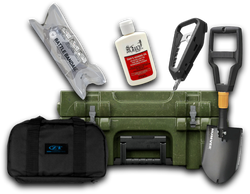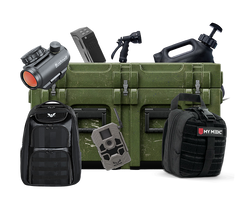Is It Legal to Carry a Tactical Knife? Understanding the Laws and Regulations
Table of Contents
- Introduction
- Understanding Tactical Knives
- The Legal Landscape of Carrying Tactical Knives
- Conclusion
Introduction
The tactical knife has become a symbol of readiness, survival, and self-defense, often regarded as an essential tool for outdoor enthusiasts and tactical aficionados alike. With rising interest in personal safety and preparedness, many individuals find themselves asking the crucial question: Is it legal to carry a tactical knife? This inquiry not only concerns legality but also involves understanding the nuances of knife types, state-specific regulations, and the potential implications of carrying such a tool.
Whether you are an experienced survivalist, an outdoor adventurer, or someone keen on personal defense, knowing the laws surrounding tactical knives is critical. The legality can vary significantly from state to state and even within local jurisdictions, making it paramount to be informed about the specific laws that apply to you. This blog post aims to provide a comprehensive understanding of the legal landscape surrounding tactical knives, including what constitutes a tactical knife, the various regulations in different states, and practical considerations for carrying these tools.
By the end of this article, you will have a deeper understanding of the legalities surrounding tactical knives, empowering you to make informed decisions about your gear and ensuring you remain compliant with the law. We will explore the definitions and classifications of tactical knives, delve into state-specific laws, discuss the implications of carrying these knives in different contexts, and provide practical tips for responsible ownership.
Understanding Tactical Knives
Before diving into the legalities, it's essential to clarify what constitutes a tactical knife. Generally, a tactical knife is designed for military, law enforcement, and outdoor use, featuring robust construction, versatile functionality, and ease of access. Key characteristics of tactical knives include:
-
Blade Type: Tactical knives can come in various blade styles, including fixed blades, folding knives, and serrated edges. They are often designed for quick deployment and efficient cutting capabilities.
-
Materials: High-quality tactical knives are constructed from durable materials such as stainless steel, carbon steel, or other alloys, ensuring longevity and reliability under challenging conditions.
-
Ergonomics: A well-designed tactical knife will have an ergonomic handle that provides a secure grip, enabling the user to maintain control in various situations.
-
Applications: Tactical knives are versatile tools used for self-defense, outdoor survival, camping, and everyday carry (EDC) purposes. Their multi-functional design often includes features like seatbelt cutters or glass breakers.
Understanding these features is vital, as the classification of a knife can influence its legal status. In many jurisdictions, the law may differentiate between tactical knives and other types, such as utility knives or switchblades.
The Legal Landscape of Carrying Tactical Knives
Federal vs. State Laws
The legality of carrying a tactical knife is primarily governed by state laws rather than federal regulations. While federal law does address specific categories of knives, such as switchblades and automatic knives, most states have the authority to create their own regulations regarding the possession, sale, and carry of knives. This means that what may be legal in one state could be illegal in another, leading to a patchwork of laws across the country.
General Guidelines for Knife Carrying
-
Open vs. Concealed Carry: Many states allow open carry of knives, meaning you can carry a knife visibly on your person. Concealed carry, however, may have more restrictions. Understanding whether open carry is permissible in your state will help you navigate local laws.
-
Blade Length Restrictions: Some states impose blade length restrictions, which determine the maximum allowable length for a knife carried in public. For example, blades longer than a specific length may be classified as illegal weapons in certain jurisdictions.
-
Types of Knives: The classification of a knife can affect its legality. Tactical knives, switchblades, and balisongs (butterfly knives) may be subject to different regulations. It is crucial to understand how your state defines these categories.
-
Restricted Areas: Carrying a knife in certain locations, such as schools, government buildings, and public transportation, may be prohibited regardless of state laws. Familiarizing yourself with these restrictions is essential for responsible ownership.
-
Intent and Use: The intent behind carrying a knife can impact its legality. For instance, if a knife is carried for self-defense, it may be treated differently compared to a knife intended for utility purposes. Courts may consider the context in which the knife is used or displayed.
State-Specific Regulations
To provide a clearer picture of the legal landscape, let’s explore specific laws regarding tactical knives in several states. This is not an exhaustive list, but it will give you insight into how regulations can vary.
California
In California, the laws surrounding knives are stringent. Tactical knives are not explicitly defined, but several regulations apply:
-
Switchblades: Illegal if the blade is over 2 inches. This includes automatic knives that can be opened with the push of a button.
-
Fixed Blades: Legal to carry openly; concealed carry is subject to restrictions and may require a permit.
-
Prohibited Knives: Certain knives, such as ballistic knives and dirks, are illegal to carry.
Understanding these laws is crucial for anyone living in or traveling to California.
New York
New York has specific laws that can complicate the legality of carrying tactical knives:
-
Switchblades: Always illegal to carry, regardless of context.
-
Gravity Knives: Although recent changes have relaxed some restrictions, possession can still lead to legal issues.
-
Length Restrictions: Any knife with a blade longer than 4 inches is illegal if carried in public view.
-
Intent Matters: Carrying a knife for self-defense can lead to legal scrutiny, especially if it is perceived as a weapon.
Texas
Texas is known for its more permissive knife laws:
-
Open Carry: Legal for most knives, including tactical knives.
-
Concealed Carry: Legal for knives, provided they are not considered illegal weapons.
-
Blade Length: No specific restrictions on blade length for knives carried openly, but concealed carry may have limitations.
Florida
Florida’s knife laws are generally favorable for knife enthusiasts:
-
Open Carry: Legal for most knives.
-
Concealed Carry: Legal for knives with a concealed carry permit.
-
No Length Restrictions: There are no specific restrictions on blade length for general carry.
Practical Considerations for Knife Owners
Understanding the legal landscape is only part of responsible knife ownership. Here are practical tips for those who carry tactical knives:
-
Know Your Local Laws: Always stay informed about the knife laws in your state, county, and city. Local ordinances can impose stricter regulations than state laws.
-
Educate Yourself on Knife Types: Familiarize yourself with the different classifications of knives and their legal implications. Knowing the distinctions can help you choose the right tactical knife that complies with the law.
-
Consider the Context: Think about where you are carrying your knife. Avoid carrying in schools, government buildings, or other restricted areas. Always opt for discretion if you are in a crowded public space.
-
Use Responsibly: Carry your knife with the intent of using it as a tool, not as a weapon. This mindset can help you navigate legal challenges should they arise.
-
Join the Community: Engage with fellow knife enthusiasts and tactical gear communities. Sharing experiences and knowledge can enhance your understanding and preparedness.
Conclusion
As you can see, the question of whether it is legal to carry a tactical knife is not a straightforward one. It involves understanding a complex web of regulations that vary by state and local laws. Whether you are using your tactical knife for self-defense, outdoor activities, or everyday tasks, being informed is key to responsible ownership and compliance with the law.
By taking the time to understand the legalities surrounding tactical knives, you empower yourself to make informed decisions, ensuring that you remain prepared and compliant. Remember, knowledge is your best defense, whether in the field or in everyday life.
If you’re looking for high-quality tactical gear, Crate Club offers a range of curated subscriptions tailored to your needs, from beginner to advanced. Explore our offerings and elevate your preparedness today.
FAQ
1. Can I carry a tactical knife in any state?
- No, knife laws vary significantly from state to state. Always check local laws before carrying a tactical knife.
2. What defines a tactical knife?
- A tactical knife is typically designed for military, law enforcement, and survival purposes, featuring robust construction and a versatile design.
3. Are there restrictions on blade length?
- Yes, many states impose blade length restrictions. Check your state’s laws for specific limits.
4. Is concealed carry of a tactical knife legal?
- It depends on the state. Some states allow concealed carry, while others have restrictions or require permits.
5. What should I do if I get stopped by law enforcement with a tactical knife?
- Remain calm, inform the officer that you have a knife, and comply with their instructions. Knowing the law can help you navigate these situations.
For more information on tactical gear and to explore our curated collections, visit the Crate Club Shop or consider joining our subscription service to receive top-quality gear delivered to your door every month.
Share this article



